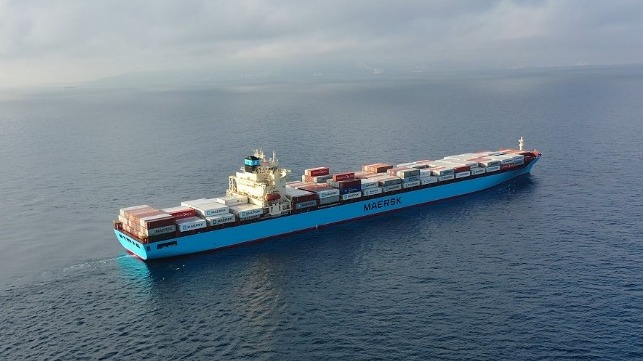Maersk Warns Red Sea Impact Widens Creating Capacity Constraints and Costs

The largest container carriers are warning customers of increased disruptions and costs after the Houthi widened the attacks further into the Indian Ocean and have threatened to further expand the attacks as Israel begins an offensive on the city of Rahaf in Gaza. Both Maersk and Hapag-Lloyd said they will be further diverting ships with Maersk raising its surcharges as it warns of increased costs and capacity constraints.
“The effects of the situation in the Red Sea are widening and continue to cause industry-wide disruptions,” Maersk writes in a May 6 customer advisory. “The complexity of the situation in the Red Sea has intensified over the last few months…The risk zone has expanded, and the attacks are reaching further offshore.”
Last week’s Maersk CEO Vincent Clerc told investors that he expected the problems would continue well into 2024. Similarly, Hapag told Reuters today that it also sees the diversions lasting for most of this year.
As a result, Maersk is reporting that bottlenecks and vessel bunching as well as delays and equipment and capacity shortages are developing. They report using 40 percent more fuel per journey while saying that charter rates are currently three times higher, often fixed for five years.
“We estimate an industry-wide capacity loss of 15 to 20 percent on the Far East to North Europe and Mediterranean market, during Q2,” the advisory warns.
Maersk says it is sailing faster and adding capacity to offset the longer voyages, additional time, and the cost of moving cargo. However, after reducing its surcharges they warn they are increasing again.
Maersk reports it has so far leased more than 125,000 additional containers to address some of the capacity concerns. But container leasing and trading platform Container xChange highlights in addition to the added time in transit, “a substantial number of containers are stranded in network locations.”
Container xChange also reports significant volatility in container prices. They quote customers from China reporting that shipping lines and container leasers ordered more than 100,000 TEU in April, with China’s container manufacturers occupied with orders till the end of July.
“Container prices are continuously climbing, adjusting every 48 hours,” a customer told Container xChange.
Hapag-Lloyd responded to Reuters today that it is also avoiding the area after the attacks moved further out to sea.
Maersk told investors that the new capacity as containerships ordered years ago are now delivering will long-term shift the current capacity constraints in the market. But near term, they project more market volatility as there are no signs of relief from the Red Sea disruptions.
